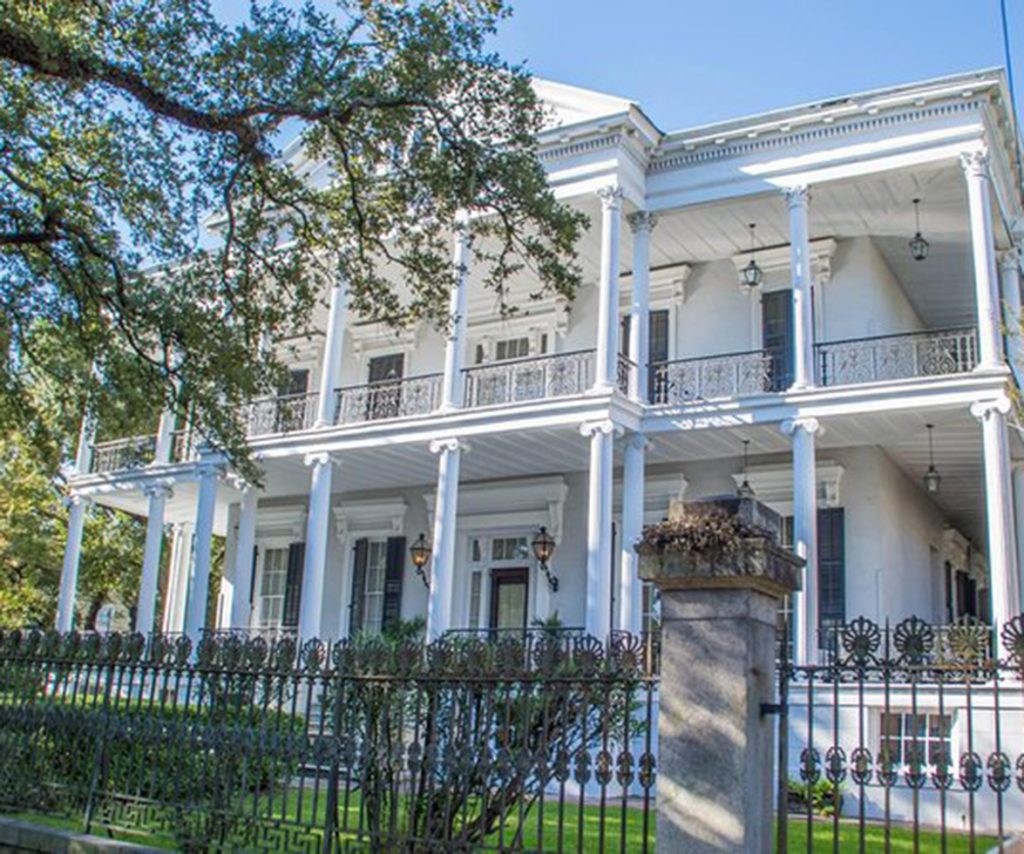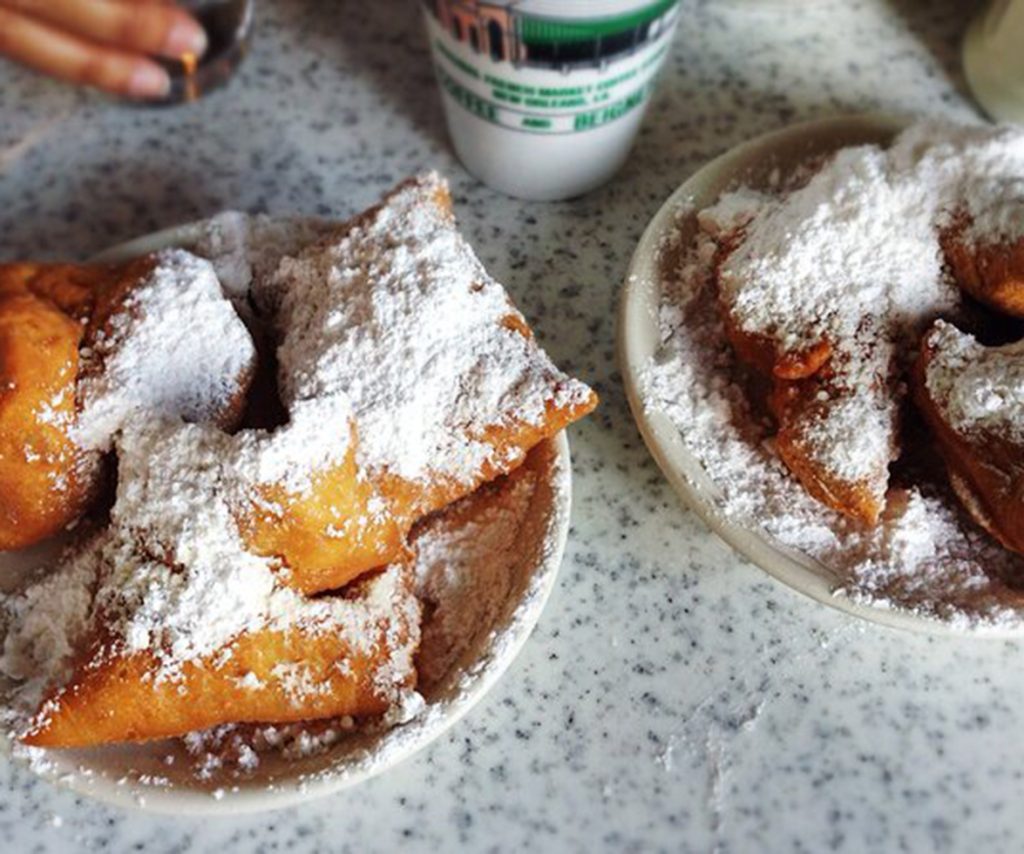Exploring New Orleans on foot is an experience like no other. The city’s streets are alive with music, history, and stories that span centuries. Over the years, I’ve walked countless miles through the French Quarter, Marigny, and the Garden District, and each tour left me with a new perspective on this unique city. From haunted alleys to the birthplace of jazz, every step feels like walking through a living museum. I’ll share my personal experiences from three tours I’ve taken and recommend four additional tours that I believe are must-dos for anyone visiting New Orleans.
My Personal Walking Tour Experiences
- French Quarter Ghost Tour
Location: Begins at 739 St. Ann Street, French Quarter, New Orleans, LA
Duration: Approximately 2 hours
Price: $25–$35 per person
Booking: Recommended through Viator or directly via French Quarter Phantoms
I’ve always been fascinated by the supernatural, so the French Quarter Ghost Tour was the perfect introduction to the city’s haunted past. Our guide, a storyteller with a knack for dramatic pauses, led us through shadowy alleyways, candlelit courtyards, and historic cemeteries while recounting tales of spirits, voodoo legends, and unsolved mysteries.
Highlights I Loved:
• LaLaurie Mansion: Learning about Madame LaLaurie’s infamous history sent chills down my spine. The mansion itself is stunning, with intricate ironwork and a storied past that feels tangible.
• Lafayette Cemetery No. 1: Walking among the above-ground tombs, I felt a mix of reverence and curiosity. The guide shared eerie tales of spirits still said to roam the grounds.
• Pirate’s Alley: The stories of hidden treasure and restless souls made this small alley one of my favorite stops.
Pros:
• Small group size made the tour intimate.
• Guides are incredibly knowledgeable and entertaining.
• Nighttime setting enhances the spooky ambiance.
Cons:
• The walk can be physically demanding for those with mobility issues.
• Some areas are crowded during peak tourist season.
Tips:
• Wear comfortable shoes.
• Bring a light jacket; evenings can get chilly.
• Arrive 10 minutes early for check-in.
- Frenchmen Street Jazz Walking Tour
Location: Begins at 511 Frenchmen Street, Marigny, New Orleans, LA
Duration: 3 hours
Price: $40 per person
Booking: Available via Frenchmen Street Music Tours
Jazz is the heartbeat of New Orleans, and this tour immerses you directly in it. We walked from venue to venue, exploring historic clubs while listening to live music. Our guide, a local musician, provided insider stories about jazz legends and pointed out famous spots where Louis Armstrong and Jelly Roll Morton once played.
Highlights I Loved:
• The Spotted Cat Music Club: A cozy venue with vibrant local performers. I spent a good 20 minutes here just soaking in the music.
• Blue Nile: The large club offered a contrast to smaller bars, showing the diversity of New Orleans jazz culture.
• Street Performers: Between venues, I loved stopping to listen to brass bands performing on the sidewalks, adding an authentic layer to the experience.
Pros:
• Access to behind-the-scenes insights from local musicians.
• Opportunity to experience both small, intimate clubs and larger venues.
• Perfect mix of walking, listening, and cultural immersion.
Cons:
• Can get noisy for those not used to live music.
• Alcohol is often part of the experience, which may not suit everyone.
Tips:
• Bring cash for tips.
• Wear earplugs if you’re sensitive to loud music.
• Plan your tour on a weekday for smaller crowds.
- Creole History and Legends Walking Tour
Location: French Quarter central meeting point near Jackson Square
Duration: 2.5 hours
Price: $30–$40 per person
Booking: Available via local guides and online platforms like GetYourGuide
This tour focuses on the cultural history of New Orleans, from Creole cuisine to historical landmarks. Our guide brought the stories of influential Creole families to life, and I learned about the architecture, culinary traditions, and even the linguistic heritage of the city.
Highlights I Loved:
• Marie Laveau’s House: Learning about the “Voodoo Queen” and the influence of Creole culture on spiritual practices was fascinating.
• Café du Monde: A quick stop for beignets provided both a delicious snack and a cultural experience.
• Historic Homes: We explored beautiful Creole-style houses with detailed ironwork balconies, each with its own story.
Pros:
• Educational and immersive, especially for history buffs.
• Combines storytelling with tasting experiences.
• Great photo opportunities at historic landmarks.
Cons:
• Not ideal for those looking for nightlife or music-focused tours.
• Some parts involve standing in the sun.
Tips:
• Bring water and sunscreen.
• Take notes or photos of plaques and guides’ stories for later reference.
• Comfortable walking shoes are a must.

Recommended Walking Tours
- Garden District Architecture Tour
Location: Starts at Magazine Street near Washington Avenue
Highlights: Antebellum mansions, oak-lined streets, Lafayette Cemetery visits
Why I Recommend: Perfect for architecture lovers and photographers. The guide shares stories of historic families and modern preservation efforts.
Pros: Stunning visuals, calm atmosphere, fewer crowds than French Quarter.
Cons: Less nightlife, primarily daytime activity. - Voodoo and Spiritual New Orleans Tour
Location: French Quarter, meets at 800 Bourbon Street
Highlights: Visits to voodoo shops, historic temples, and cemeteries
Why I Recommend: Deep dive into spiritual traditions and cultural mystique.
Pros: Insightful and unique, with small groups for personalized experience.
Cons: Some may find the subject matter intense. - Treme Music and Culture Tour
Location: Central Treme neighborhood meeting point
Highlights: Jazz history, Mardi Gras Indians, community stories
Why I Recommend: A cultural and musical immersion beyond Bourbon Street.
Pros: Engaging guide, vibrant neighborhood experience.
Cons: Requires more walking and attention in crowded areas. - Culinary Walking Tour of the French Quarter
Location: Starts near Jackson Square
Highlights: Beignets, gumbo, po’boys, Creole and Cajun specialties
Why I Recommend: Combines history with food tasting for a multi-sensory experience.
Pros: Delicious, informative, interactive.
Cons: Not suitable for those with dietary restrictions without prior notice.
Practical Tips for Walking Tours in New Orleans
• Wear Comfortable Shoes: The streets are uneven, and tours often exceed two hours.
• Weather Prep: Bring sunscreen, hats, or light jackets depending on the season. New Orleans can be humid in summer and chilly in winter evenings.
• Cash and Cards: Some tips, small purchases, and food stops may require cash.
• Hydrate and Snack: Walking tours can be tiring, so carry a water bottle.
• Book in Advance: Particularly during Mardi Gras, Jazz Fest, and French Quarter Festival, tours sell out quickly.

The Heartbeat of New Orleans
Walking through New Orleans is more than a tour—it’s an immersion into a city alive with history, music, and mystique. Every alley, balcony, and cobblestone street tells a story. Whether it’s feeling the chill in a haunted mansion, tapping your feet to live jazz on Frenchmen Street, or savoring a beignet while learning about Creole heritage, each experience enriches your understanding of the city.
For me, the true magic of New Orleans walking tours lies in the personal connections you make—with guides, locals, and even the city itself. Each tour, whether haunted, musical, historical, or culinary, leaves a lasting imprint on your memory. I often found myself chatting with fellow travelers, sharing recommendations, or laughing with the guide at an unexpected anecdote. These small interactions make the city feel intimate and inviting, even amidst its bustling streets.
One of the aspects I cherish most is the unexpected discoveries. A side street might reveal a hidden jazz club, a centuries-old voodoo shop tucked behind ivy-covered walls, or a café serving a beignet that redefines your idea of the perfect pastry. These surprises are what make walking New Orleans unlike any other city—it’s a living, breathing museum where the exhibits move, sing, and even whisper their secrets.
Another reason walking is ideal is the sensory immersion. You hear the brass bands echoing through Frenchmen Street, smell the gumbo simmering in the open-air kitchens, feel the humidity clinging to your skin, and see the colors of wrought-iron balconies, murals, and festivals. No tour bus or car can replicate this intimacy—the city is best experienced at your own pace, letting curiosity dictate the route.
What strikes me most is the timelessness of New Orleans. Walking allows you to bridge the past and present effortlessly. You can imagine the footsteps of jazz legends, Creole families, and voodoo practitioners mingling with the footsteps of tourists like you, all sharing this vibrant, living city. It’s a rhythm, a heartbeat, and a story that unfolds with every step.
If you take only one piece of advice from my experiences: walk, explore, and let New Orleans reveal itself to you. The city is generous to those who wander thoughtfully and with an open heart. Your journey through ghostly alleys, musical avenues, and historical streets will leave you with memories, stories, and perhaps a little magic to carry home long after you’ve left.
